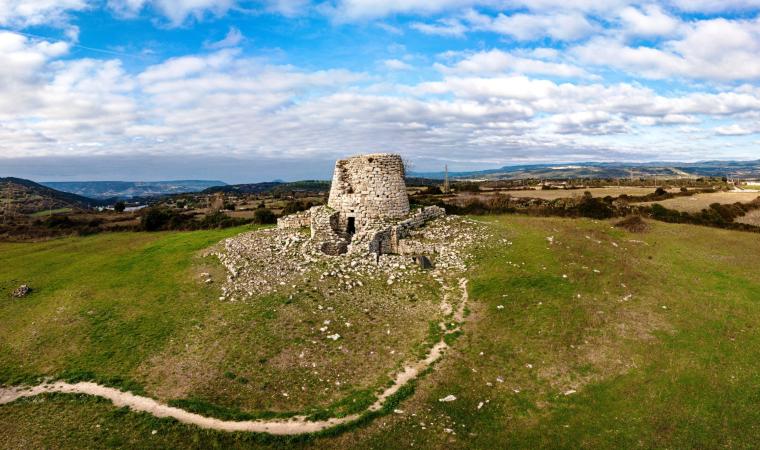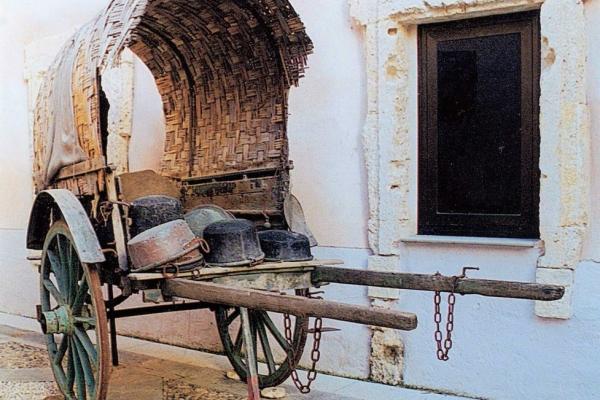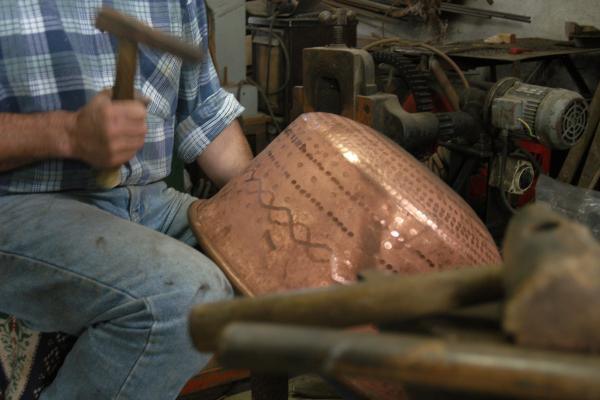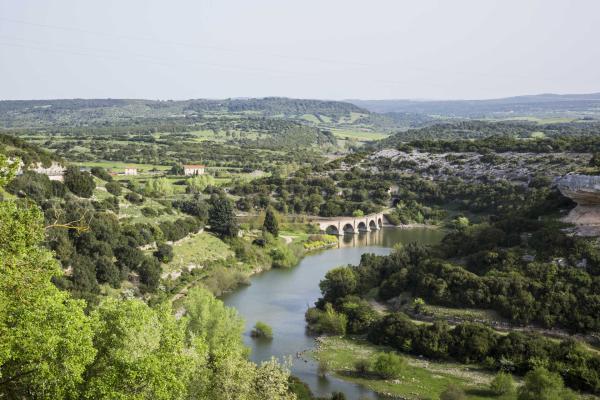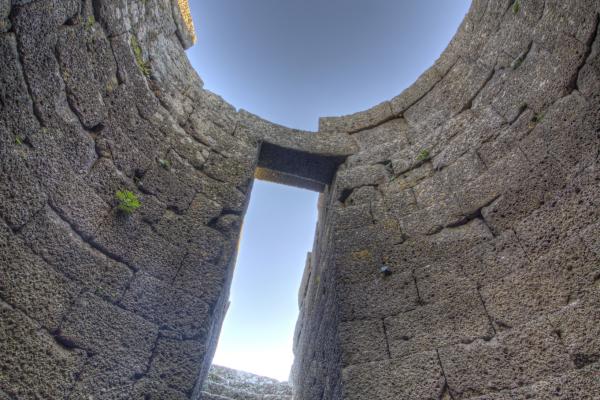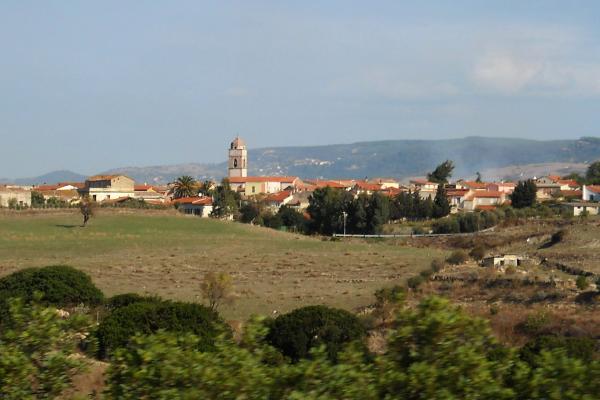"The largest and most harmonious of the Sardinian tholos, which closely resembles the breadth of those magnificent and splendid Peloponnesian acheas of the mid-2nd millennium BC". The 'father' of nuragic archaeology Giovanni Lilliu praised the singularity and elegance of the 'false dome' vault of the central tower of the nuraghe is Paras. The prehistoric fortress and the surrounding village stand on a limestone hill in a dominant position on the immediate northern outskirts of Isili. The name means 'the friars', because the land where it stands belonged to the Piarists from the 17th century, who built a monastery here. It used to be called su Idili, like the town where it is located.
The monument, built with blocks of marly limestone (white and brown) arranged in horizontal rows, consists of a central tower surrounded by three secondary towers, connected by curtain walls. It has a long and varied history, with three main phases: in the Middle Bronze Age (15th-14th BC) it was built as a single-tower nuraghe; in the Recent Bronze Age (13th-12th BC) it became a 'tancato' nuraghe (Sardinian term for courtyard), with the addition of a tower and a corridor to connect them; in the Final-Recent Bronze Age (12th-11th BC) it became a trilobate nuraghe, with the addition of two more towers and a thirty-metre-long, two-metre-thick wall around it, also with towers, which protected a village of huts. The whole area was later inhabited in Roman (2nd-3rd AD) and Byzantine (6th-7th) times: traces of Roman and early medieval huts have been found, together with ceramic finds and a bronze buckle depicting a man between two Latin crosses.
The main circular tower is almost thirteen metres high and consists of two superimposed floors. The lower one is preserved and can be visited. The inner chamber has 37 rows of stone for a height of almost twelve metres: the tallest and most harmonious in Nuragic Sardinia and second only to the Tomb of Agamemnon (at the time). It is accessed through a monumental corridor and has special features: a raised rectangular entrance, a steep chamber staircase leading to the first floor and, in the centre, a deep and finely crafted well. And above all the perfect and majestic tholos roof. The hallway also gives access to the open-air, half-moon courtyard (17 square metres), overlooked by the entrances to the three angular secondary towers (one of which can be visited) which, connected by rectilinear curtain walls, form a thrilobe bastion. On the right wall of the corridor there is a small room with a very steep staircase, which led to the top of the 'second' tower and curtain walls.
In addition to is Paras, there are around 50 nuragic sites in the Isili territory: the Asusa park, with a nuraghe of the same name, is worth a visit. There are also pre-Nuragic remains and Roman settlements (Bidda beccia, the village of Biora and the bridge over the riu Brabaciera). The area is also home to Lake San Sebastiano, an open-air park where you can go hiking, fishing, canoeing, biking and climbing.





